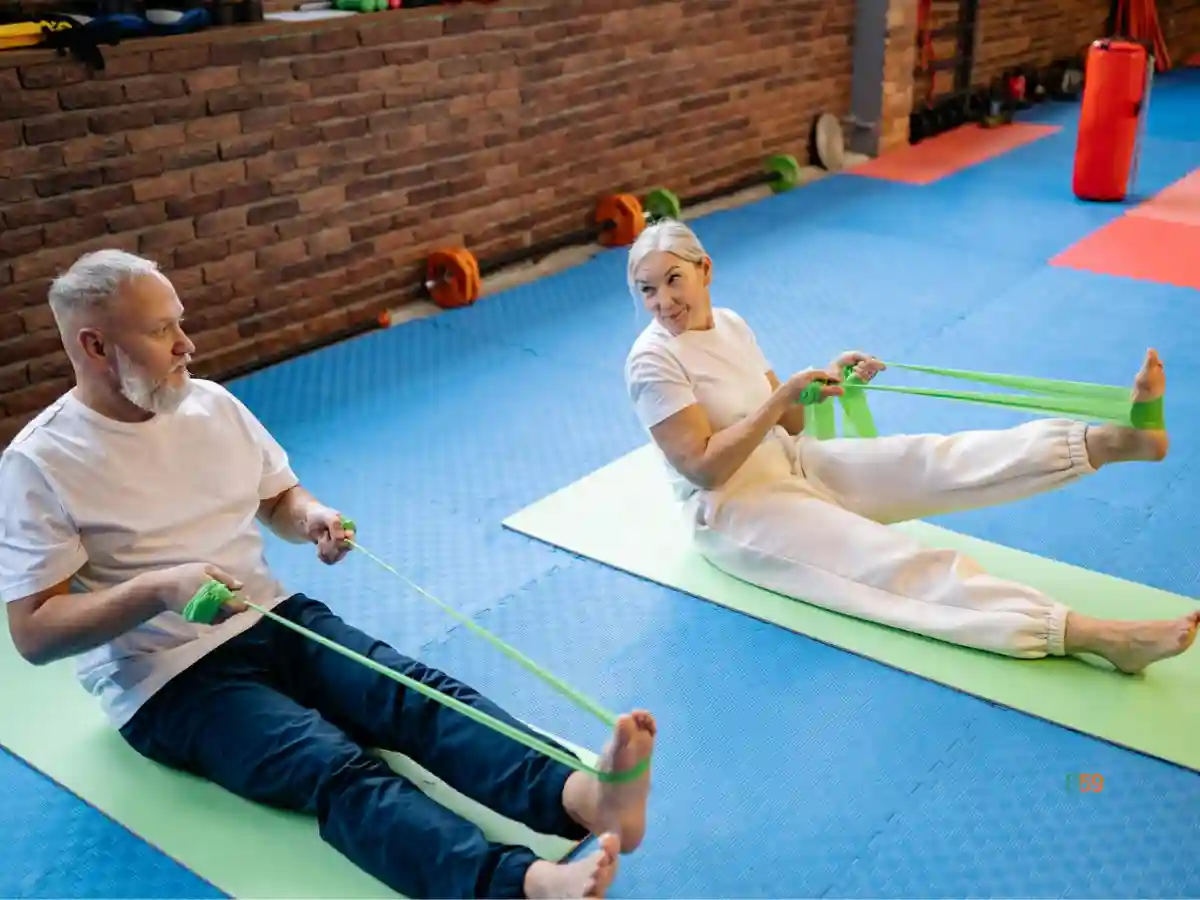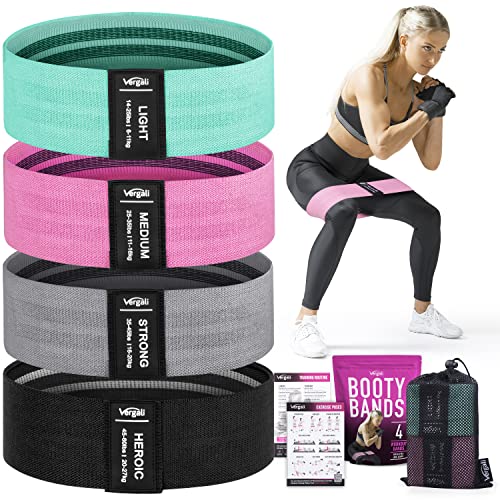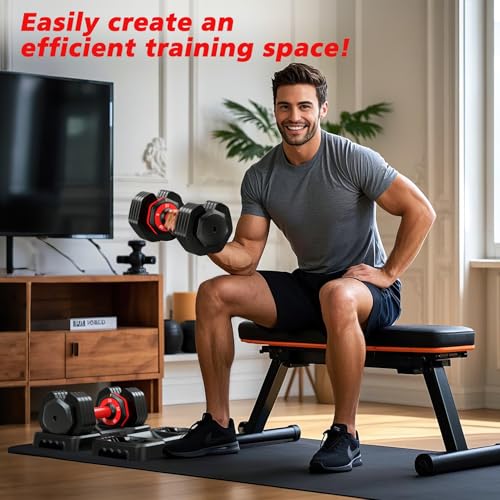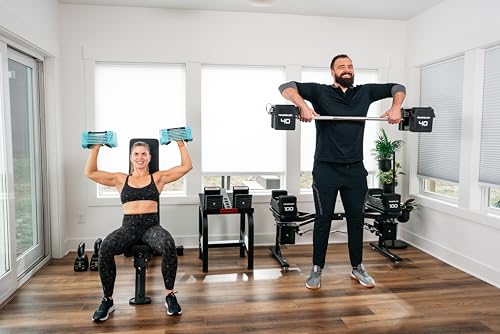The truth about exercise equipment after 60? You don’t need a garage full of gadgets to stay strong, mobile, and confident. Walking into a sporting goods store or scrolling through endless product pages can feel overwhelming. The choices seem endless, the marketing claims are hard to trust, and it’s tough to know what’s actually safe for your joints and current fitness level.
After working with hundreds of adults over 60 and testing equipment myself, I’ve discovered something liberating: five strategic pieces of equipment can deliver everything you need for strength, balance, flexibility, and cardiovascular health. No complicated machines, no equipment that collects dust, and nothing that requires a second mortgage.
This article contains affiliate links. When you purchase through these links, Beyond59 may earn a small commission at no extra cost to you. We only recommend products we’ve personally tested and believe will benefit our readers.
Why Less Equipment Actually Means Better Results
Here’s what I’ve learned from watching countless people over 60 try to build home gyms: more equipment doesn’t equal more success. In fact, it often creates the opposite problem—choice paralysis, guilt over unused purchases, and workouts that never quite gel together.
I understand the pressure you might feel to buy every piece of equipment that promises to solve your fitness challenges. The fitness industry thrives on selling the “next big thing,” but the reality is that your exercise needs after 60 are actually more focused than they were in your 30s or 40s.
You need equipment that:
- Protects your joints while building strength
- Improves balance to prevent falls
- Fits in realistic living spaces
- Grows with your fitness level
- Actually gets used consistently
These five pieces of equipment address every major fitness component recommended by the American Heart Association for adults over 65: cardiovascular health, strength training, balance work, and flexibility. More importantly, they work together as a system, not as isolated tools.
Looking for beginner-friendly workout routines to use with this equipment? Check out our Your First Strength Training Guide Over 60 and 10-Minute Morning Routines That Actually Work.
The 5 Essential Pieces (And Why Each One Matters)
1. Resistance Bands: Your Gentle Strength Builder
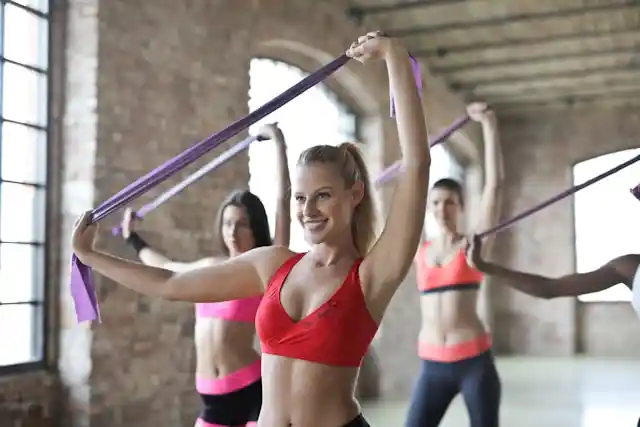
Why resistance bands top the list: They provide variable resistance that’s easier on joints than free weights while still delivering serious strength gains. Research shows resistance band training can improve muscle strength by up to 30% in seniors within 12 weeks.
I understand the skepticism—how can a simple rubber band compete with serious weights? The answer lies in how resistance bands work with your body’s natural movement patterns while protecting vulnerable joints.
What makes them perfect for 60+:
- Zero impact on joints and connective tissue
- Resistance increases gradually through the movement
- Impossible to “drop” and injure yourself
- Travel anywhere and take up zero storage space
- Cost under $30 for a complete set
Limited-time opportunity: Many fitness retailers offer seasonal discounts on resistance band sets during January and September—perfect timing if you’re reading this during resolution season or back-to-school fitness motivation.
My top pick: Look for a set with multiple resistance levels (light, medium, heavy), door anchor, and comfortable handles. The TRX Suspension Trainer Duo offers the best combination of versatility and durability I’ve tested, though a basic Fitense Max Tension Set delivers excellent value.
Real-world benefit: Margaret, 67, told me resistance bands helped her regain the arm strength to lift her grandson after a shoulder injury. “I was terrified of weights, but the bands felt safe. Six months later, I’m stronger than I was at 50.”
2. Adjustable Dumbbells: Progressive Strength Made Simple

Why adjustable dumbbells are non-negotiable: Muscle mass decreases by 3-8% per decade after age 30, accelerating after 60. Progressive resistance training is the only proven way to rebuild and maintain muscle mass, and dumbbells offer the most natural movement patterns.
I understand the intimidation factor with dumbbells—many people over 60 have memories of gym class or feeling judged in fitness environments. But adjustable dumbbells in your own home eliminate those psychological barriers while providing serious strength-building benefits.
What makes them senior-friendly:
- Start as light as 2-5 pounds per dumbbell
- Adjust weight as you get stronger
- Allow for natural, joint-friendly movement
- Work multiple muscle groups simultaneously
- Replace an entire rack of fixed weights
Seasonal consideration: Dumbbell prices typically spike in January and drop in March-April. If you’re shopping between February and May, you’ll often find better deals on quality adjustable sets.
My top pick: The PowerBlocks Sport 24 or Bowflex SelectTech 552 offer the smoothest weight changes. For budget-conscious buyers, CAP Barbell Adjustable Dumbbells provide excellent functionality at half the price.
Insider knowledge: Most people over 60 start with 5-8 pound dumbbells and progress to 12-15 pounds within six months. The adjustable feature means you’re not guessing at future needs or outgrowing your equipment.
3. Stability Ball: Balance and Core in One
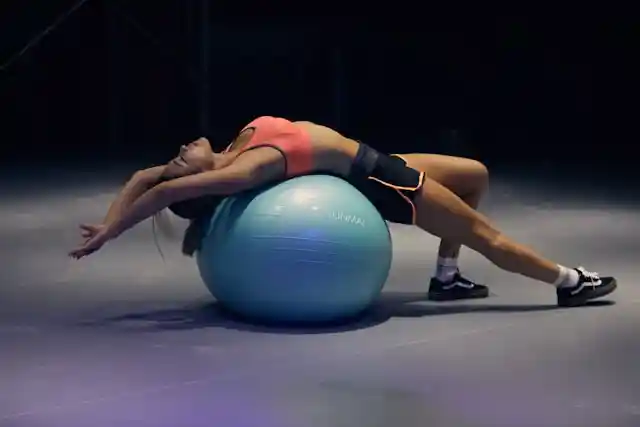
Why stability balls are balance game-changers: Falls are the leading cause of injury-related death in adults over 65, and poor core strength is a primary risk factor. A stability ball provides an unstable surface that forces your core to engage while making traditional exercises more joint-friendly.
I understand the concern about balance equipment—it might seem counterintuitive to add instability when you’re already worried about falling. But controlled instability training is actually one of the most effective ways to prevent real-world falls.
What makes them essential for 60+:
- Improves balance and proprioception
- Strengthens deep core muscles automatically
- Reduces back pain through gentle decompression
- Makes floor exercises more comfortable
- Doubles as an ergonomic desk chair
My top pick: The Gaiam Total Body Balance Ball Kit includes the ball, pump, and instructional DVD. For premium quality, the Trideer Exercise Ball offers superior burst-resistance and comes with a lifetime replacement guarantee.
Smart sizing: Choose 65cm if you’re 5’5″ to 6’0″, 55cm if you’re under 5’5″, and 75cm if you’re over 6’0″. When sitting on the ball, your thighs should be parallel to the floor.
4. Quality Yoga Mat: Your Foundation for Everything
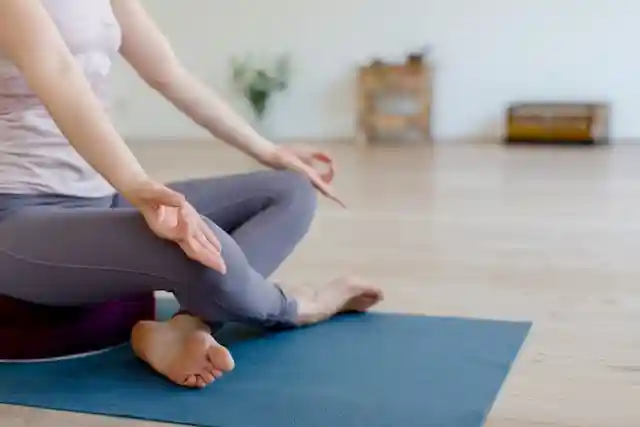
Why a yoga mat isn’t just for yoga: Every effective exercise routine for people over 60 includes floor work—stretching, core exercises, balance training, and gentle yoga flows. A quality mat transforms any floor into a comfortable, safe exercise space.
I understand the tendency to grab the cheapest mat available or skip it altogether. But after watching too many people struggle with knee pain during floor exercises or slip during stretches, I’ve learned that mat quality directly impacts exercise consistency.
What makes it crucial for 60+:
- Provides cushioning for sensitive joints
- Prevents slipping during exercises
- Defines your workout space psychologically
- Essential for stretching and flexibility work
- Supports meditation and stress reduction
Seasonal timing: Yoga mats often go on sale during National Yoga Month (September) and New Year fitness promotions. Quality mats are an investment that lasts years, so timing your purchase can save 20-40%.
My top pick: The Manduka PRO Yoga Mat offers lifetime durability and superior joint protection. For excellent value, the Gaiam Premium Yoga Mat provides 6mm thickness at a fraction of the cost.
Thickness matters: Choose 6mm thickness minimum for joint protection. Avoid mats thinner than 4mm—your knees and wrists will thank you during floor exercises.
Need guidance on gentle stretching routines? Our Complete Flexibility Guide for Active Seniors pairs perfectly with your new yoga mat.
5. Recumbent Exercise Bike: Cardio Without Joint Stress
Why recumbent bikes are the cardio solution: Traditional cardio equipment—treadmills, upright bikes, ellipticals—can be hard on knees, hips, and back. Recumbent bikes provide serious cardiovascular benefits while supporting your back and removing weight-bearing stress.
I understand the hesitation around cardio equipment—many people have bad memories of painful joints or feeling self-conscious on gym machines. Recumbent bikes eliminate both concerns by providing a comfortable, private cardio solution.
What makes them perfect for 60+:
- Back support reduces spinal stress
- Low-impact movement protects joints
- Easy entry and exit for mobility issues
- Upper body remains stable and comfortable
- Adjustable resistance for progressive training
Timing your purchase: Exercise bike prices typically drop 30-50% during end-of-summer clearances (August-September) and post-holiday sales (February-March). If you can wait for these windows, significant savings are available.
My top pick: The Schwinn 270 Recumbent Bike offers 29 workout programs and Bluetooth connectivity. For budget buyers, the Marcy Recumbent Exercise Bike ME-709 delivers solid performance at under $200.
Cardio reality check: The American Heart Association recommends 150 minutes of moderate cardio weekly for adults over 65. A recumbent bike makes this achievable even with arthritis, back pain, or balance concerns.
Setting Up Your 5-Piece Home Gym
Space requirements: These five pieces need surprisingly little room. The bike requires about 4×6 feet of floor space, while everything else stores in a closet or under a bed. Total footprint during use: roughly 8×8 feet.
I understand the space limitations many people face—not everyone has a dedicated home gym room. The beauty of this five-piece system is its adaptability to real living situations.
Setup strategy:
- Position the bike permanently in a corner with TV viewing
- Store resistance bands in a basket near your exercise area
- Keep dumbbells on a small rack or in a designated corner
- Roll the mat and store vertically against a wall
- Deflate the stability ball between uses if space is tight
Making it convenient: The easier your equipment is to access, the more likely you’ll use it. I recommend keeping everything in one designated area rather than scattered throughout the house.
Your Equipment Investment Breakdown
Budget-Friendly Setup ($250-350 total)
- Resistance bands: $25-40 (Bodylastics set)
- Adjustable dumbbells: $80-120 (CAP Barbell adjustable)
- Stability ball: $20-30 (basic 65cm ball with pump)
- Yoga mat: $25-40 (Gaiam 6mm mat)
- Recumbent bike: $150-200 (Marcy ME-709)
Premium Setup ($800-1200 total)
- Resistance bands: $60-80 (TRX Suspension Trainer)
- Adjustable dumbbells: $300-400 (Bowflex SelectTech 552)
- Stability ball: $40-60 (Trideer professional grade)
- Yoga mat: $80-120 (Manduka PRO)
- Recumbent bike: $400-600 (Schwinn 270)
Value perspective: Compare this to a gym membership ($40-80/month) or personal training ($50-100/session). Your five-piece setup pays for itself within 6-12 months while providing convenience and consistency that gyms can’t match.
Smart shopping strategy: Consider building your collection over 3-6 months to spread costs and take advantage of seasonal sales. Start with resistance bands and a yoga mat (total under $70), then add pieces as budget allows.
What Makes This System Actually Work
Progressive capability: Each piece grows with your fitness level. Resistance bands offer multiple difficulty levels, dumbbells adjust weight, stability balls challenge balance progressively, mats support advancing flexibility, and bikes provide endless cardio progression.
Complementary benefits: These aren’t five random pieces—they work together. Resistance bands warm up muscles for dumbbell work. The stability ball enhances both strength and cardio sessions. The mat facilitates recovery stretching after every workout.
Consistency factors: The biggest predictor of exercise success after 60 isn’t motivation—it’s convenience. When your complete gym fits in one corner and takes 2 minutes to set up, you’ll actually use it.
I understand the doubt that might creep in—can five simple pieces really replace a fully equipped gym? The answer is yes, because effectiveness isn’t about equipment quantity. It’s about having the right tools that you’ll actually use consistently.
Frequently Asked Questions
Is it really safe to exercise at home without supervision after 60?
Yes, with proper equipment and gradual progression. The five pieces recommended here are specifically chosen for their safety profiles. Start slowly, listen to your body, and consider a few sessions with a qualified trainer to learn proper form. Many insurance plans cover fitness consultations for seniors.
What if I have arthritis or joint problems?
These five pieces are actually ideal for joint issues. Resistance bands provide gentle, variable resistance. Recumbent bikes eliminate weight-bearing stress. Stability balls support natural movement patterns. Always consult your doctor before starting any exercise program, but this equipment is designed with joint health in mind.
How much space do I really need?
Minimum 8×8 feet for active use, but most pieces store in a closet. The recumbent bike is the largest piece at roughly 4×6 feet. Everything else is highly portable. Many people set up in a living room corner or spare bedroom.
Can I lose weight with just these five pieces?
Absolutely. Weight loss requires consistent calorie burn and muscle building—both achievable with this equipment. The recumbent bike provides cardio, dumbbells and resistance bands build muscle (which burns calories at rest), and the complete system supports the consistency needed for long-term weight management.
What if I’m a complete beginner to exercise?
This system is perfect for beginners. Each piece allows you to start at your current fitness level and progress gradually. Resistance bands offer the gentlest introduction to strength training, while recumbent bikes provide the safest cardio option. Consider starting with just bands and a mat for the first month.
How long before I see results?
Most people notice improved energy within 2-3 weeks and visible strength gains within 6-8 weeks. Balance improvements often show up first, followed by increased endurance and muscle tone. Remember, consistency matters more than intensity—20 minutes three times per week beats sporadic hour-long sessions.
Do I need to buy everything at once?
Not at all. Many people start with resistance bands and a yoga mat (under $70 total), then add pieces monthly. This approach spreads costs and lets you integrate each piece into your routine before adding the next.
What’s the difference between cheap and expensive versions?
Durability and comfort features. Budget options work fine for most people, but premium versions offer smoother adjustments, longer warranties, and enhanced comfort features. If you’re unsure about commitment level, start with budget options and upgrade pieces you use most.
Your Next Steps
Start with what calls to you most. If balance feels like your biggest concern, begin with the stability ball. If strength is the priority, grab resistance bands first. There’s no wrong order, and you can build your collection over 3-6 months.
Take advantage of current timing. If you’re reading this during January or September, many retailers offer significant discounts on fitness equipment. Even waiting for the right sale can save you 20-40% on your complete setup.
Test before major purchases. Many sporting goods stores let you try recumbent bikes. Some Amazon orders include generous return policies. Don’t commit to expensive equipment without ensuring comfort and fit.
Remember why you’re doing this. This isn’t about becoming a fitness influencer or impressing anyone at a gym. This is about maintaining your independence, preventing falls, staying strong for your grandchildren, and feeling confident in your body as you age.
The overwhelming world of fitness equipment becomes remarkably simple when you focus on what actually matters after 60. These five pieces—resistance bands, adjustable dumbbells, stability ball, quality yoga mat, and recumbent bike—provide everything your body needs to stay strong, balanced, and healthy.
Your future self will thank you for making the investment. More importantly, your current self will feel the confidence that comes with taking control of your health and fitness journey.
Ready to build your 5-piece home gym? Start with the piece that excites you most, and remember—consistency beats perfection every time.

Rick Huey is a digital strategist and SEO expert with over 10 years of experience helping bloggers and small business owners grow their website traffic. He specializes in keyword research, content strategy, and building high-ranking sites. When he’s not optimizing websites, Rick enjoys hiking, fishing, and spending time outdoors.
